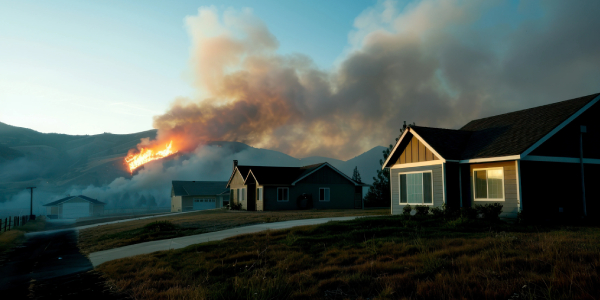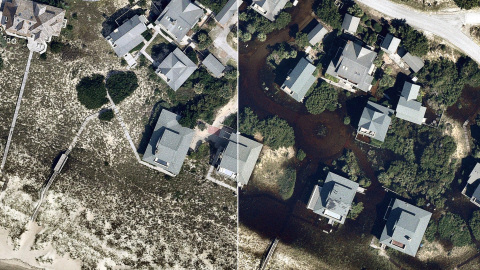Surviving the flames

By Lori Jerome, PABCO Roofing.
Learn how new technology and codes are helping safeguard homes against wildfires.
In the Western part of the United States, summer has become the precursor to another season — wildfire season. This is due to the rising risk of wildfires, especially for those that live in more rural areas, closer to wildland. In response to the rising risk, the construction industry has developed technologies and building codes that make homes more resilient in the face of flames. A recent Western States Roofing Contractors Association (WSRCA) bulletin highlighted some of these new building code requirements, specifically focusing on steep-slope (typically residential) roofing. If you live in an area prone to wildfires, it’s important to understand these new codes and what it means for a home’s safety. Check out this article from the experts at PABCO Roofing Products to learn what updates and options should be discussed prior to updating or replacing a roof in wildfire-risk areas.
What you need to know about fire-resistant roofing
The updated building codes primarily focus on preventing wildfires from igniting combustible roof decks. One of the most critical changes is the requirement for roofing underlayments to meet stringent fire resistance standards. Specifically, these underlayments must comply with ASTM E108 Class A standards, ensuring they provide maximum protection against fire.
But what does this mean in simple terms? Essentially, the underlayment is the layer of material between your roof deck (the structural surface) and your shingles. In the event of a wildfire, embers can travel miles and land on your roof. If a roof has gaps between the shingles and the underlayment, these embers can ignite the roof deck, leading to a fire. The new code changes aim to minimize this risk by requiring underlayments that are resistant to high heat and prevent embers from penetrating the roof structure.
What needs to be done about these changes?
Wildfires can cause significant damage in a matter of minutes, and the roof is one of the first lines of defense. A fire-resistant roof can protect a home from ignition and help prevent the spread of fire.
It’s important to note, however, that these building code changes are recent, which means not all roofing materials currently available may meet the new standards. This is why it’s crucial for homeowners to talk to a roofing contractor before making any updates or investments in a new roof. It is the job of the contractor to help their clients navigate these new requirements and ensure that their home is as protected as possible.
Common questions homeowners might have
Are asphalt shingles fire-resistant?
Yes, but not all asphalt shingles are created equally. The most fire-resistant shingles carry a Class A rating, the highest level of fire resistance. These shingles are designed to withstand severe fire exposure and are less likely to ignite or spread flames.
What does Class A fire rating mean?
A Class A rating indicates that shingles are highly resistant to fire. They are tested to ensure they don’t easily ignite, spread flames or suffer damage under severe fire conditions. All asphalt shingles manufactured by PABCO Roofing Products carry a Class A fire rating.
Will my current roof meet the new standard?
This depends on the materials and installation of your existing roof. If a roof was installed before these updates, it’s possible that it may not fully meet the new fire-resistance requirements. Homeowners should consult with a roofing contractor to assess their roof and determine any necessary updates.
What if these roofing materials aren’t available locally yet?
The new code changes are still being adopted, so it’s possible that not all materials that meet the requirements are readily available in your area. For homeowners, this is another reason to work with a knowledgeable contractor who can help source the appropriate materials or find alternatives to comply with the new standards.
Bridging the gap between code updates and available materials
One of the challenges that homeowners might face is the gap between these new code requirements and the availability of compliant materials. As the technical bulletin mentions, while the codes are in place, some jurisdictions might not be fully aware of them, and not all manufacturers have products that meet these new standards readily available. This gap can create confusion and frustration, especially if you’re trying to ensure your home is as fire-resistant as possible.
The best way to bridge the gap is to stay informed and be proactive. As a contractor, make sure you are up to date on the latest building codes and understand the specific requirements for your area. Then you can guide homeowners in selecting materials that not only meet the new standards but also provide the best protection for their home.
Original article and photo source: PABCO
Learn more about PABCO Roofing Products in their Coffee Shop Directory or visit www.pabcoroofing.com.






















Comments
Leave a Reply
Have an account? Login to leave a comment!
Sign In